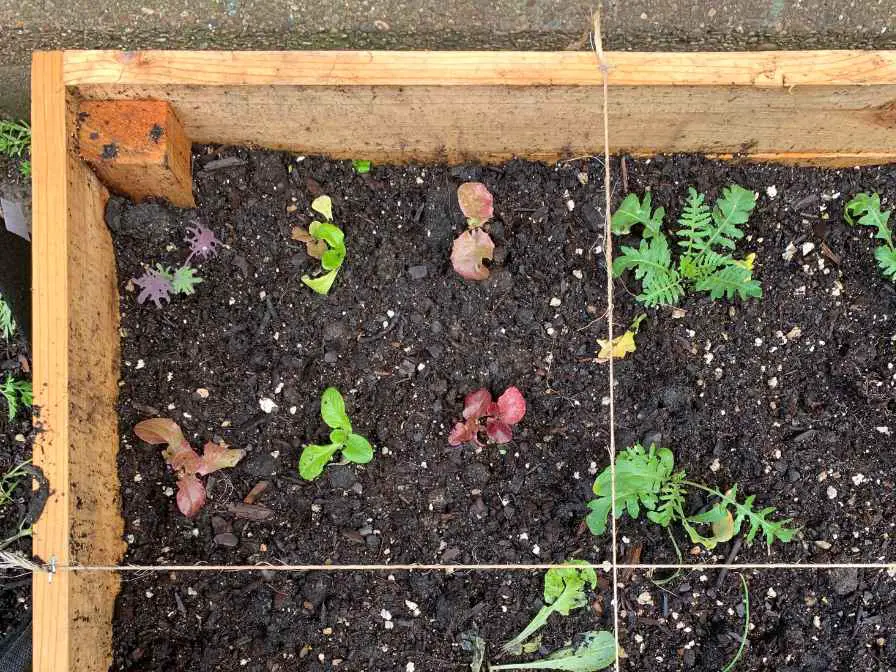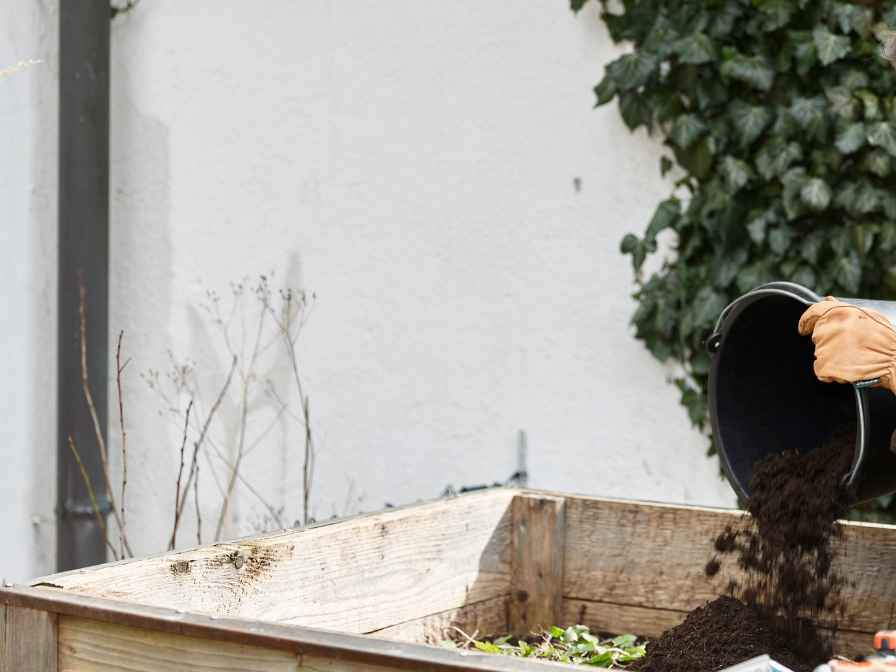If you have space problems or you want the most efficient and effective way of gardening, you can opt for the raised garden beds. Well, you will get the raised garden bed from the market, but what about filling it? We are going to tell you how to make soil for raised garden beds to answer that question.

Raised garden beds
Raised garden beds are elevated garden plots that are constructed above ground level using materials like wood, stone, bricks, or concrete blocks. They are an increasingly popular option for growing vegetables, flowers, and herbs in both urban and suburban settings.
To build a raised garden bed, you will need to select a suitable location that receives adequate sunlight and is level. You can then choose the material for the sides of the bed and construct a frame. The bed should be filled with soil and compost before planting.
Raised garden beds can be used for a variety of purposes, including growing vegetables, herbs, flowers, and even small fruit trees. They are also a great option for those with limited space, as they can be constructed in small areas like balconies and patios.
When selecting plants for your raised garden bed, it is important to choose varieties that are well-suited to your climate and growing conditions. You should also consider the amount of sunlight, water, and nutrients that each plant requires, as well as its growth habits and spacing requirements.
Overall, raised garden beds are a great option for those looking to start a garden or expand their existing gardening space. With proper care and maintenance, they can provide a bountiful harvest of fresh, healthy produce and beautiful flowers.
Benefits of using raised garden
There are many benefits of using raised garden beds for plants. These raised garden beds make your job of gardening easy and effective.
Improved Soil Quality
Raised garden beds allow for better control over the quality of soil used in the garden. The soil in raised beds can be amended with compost, fertilizer, and other organic matter, which improves soil fertility and structure, resulting in healthier plants and higher yields.
Better Drainage
Raised beds provide better drainage than traditional in-ground gardens, which reduces the risk of soil erosion and waterlogging. This is particularly important in areas with heavy rainfall or poor soil drainage.
Easier to Manage
The elevated height of raised garden beds makes it easier to manage the garden without having to bend over or kneel down, which reduces strain on the back and knees. This makes raised beds a great option for older gardeners or those with mobility issues.
Pest and Weed Control
Raised garden beds can be fitted with a weed barrier, which reduces the growth of weeds in the garden. Additionally, the elevated height of the bed makes it more difficult for pests to access the plants, which reduces the risk of damage from insects and rodents.
Longer Growing Season
Raised garden beds get warm easily can stay warm in the winter for a longer period of time and which extends the planting & growing season and allows for earlier planting in the spring and later harvesting in the fall. It can help you to try more plants.
Versatility
Raised garden beds can be constructed in a variety of shapes and sizes to fit any garden space. They can also be used for a variety of plants, including vegetables, herbs, flowers, and small fruit trees. You can go for a variety of plants.
How to make soil for raised garden beds?

Determine the size of your raised garden bed and calculate the amount of soil needed. You will need enough soil to fill the bed to a depth of at least 12 inches. Choose a soil mix that is appropriate for the plants you plan to grow.
The ideal soil mix for raised garden beds should be well-draining, nutrient-rich, and have a pH between 6 to 7. Commonly used items are coarse vermiculite, peat moss, and compost at this stage or at a later stage.
Start by filling the bottom of the raised garden bed with a layer of organic material, such as leaves, straw, or grass clippings. This will improve drainage and provide nutrients to the soil over time. Next, add a layer of compost to the raised garden bed. Compost is an excellent source of nutrients and helps to improve soil structure and water retention.
Add a layer of topsoil to the raised garden bed. Topsoil is the uppermost layer of soil and contains most of the nutrients that plants need to grow. Mix in other soil amendments, such as perlite or vermiculite, to improve soil drainage and aeration.
If necessary, adjust the pH of the soil using lime or sulfur. PH for most of the plants to be planted in the raised garden bed is 6 to 7. Mix all of the soil ingredients together thoroughly using a garden fork or shovel. Water the soil thoroughly to settle it into place and remove any air pockets.
Allow the soil to settle for a few days before planting. By following these steps, you can create a high-quality soil mix for your raised garden beds that will provide the necessary nutrients and drainage for healthy plant growth.
Taking care of plants in the raised garden beds
Taking care of plants in the raised garden beds is slightly different from others in the garden, as it is humanly created.
Watering
Raised garden beds can dry out more quickly than in-ground gardens, so it is important to water plants regularly. Water deeply, but not too frequently, to encourage deep root growth. Check the moisture level of the soil regularly to ensure it is not too dry or too wet.
Fertilizing
Raised garden beds benefit from regular fertilization to replenish nutrients in the soil. Use a balanced, organic fertilizer or compost every few weeks or as needed. You can use water-soluble fertilizers to make sure it directly gets to the plants.
Weeding
Keep the area around the raised garden bed free of weeds to prevent them from competing with your plants for nutrients and water. Use a hoe or hand tool to remove weeds before they become established.
Pruning
Some plants may need regular pruning to promote growth and prevent overcrowding. Remove dead or damaged leaves and stems to keep plants healthy and productive. It also develops resistance to diseases.
Mulching
Mulching around the base of plants can help retain moisture, suppress weeds, and regulate soil temperature. Use a layer of organic material, such as straw, leaves, or grass clippings, around the base of plants.
Pest and diseases
Monitor your raised garden beds for signs of pests or disease, such as holes in leaves or discoloration. Use natural pest control methods, such as companion planting, physical barriers, or organic pest sprays, to control pests and prevent damage to your plants.
Harvesting
Regularly harvest mature fruits and vegetables to encourage continued production and prevent over-ripening. Be gentle when harvesting to avoid damaging the plants. Harvest at the right time, and store it at the right place.
In a nutshell, garden beds are a great choice for planting a variety of plants, herbs, and trees. It is important that you make the soil of the raised garden bed so well that it fulfills the nutrient requirements of the plants.
FAQs
How do you make good soil for raised garden beds?
Good soil is necessary for raised garden beds because it needs to fulfill the nutrients requirements and water requirements of the soil. Add compost, peat moss, and any other potting soil to make it look and work well.
How deep should the soil be in a raised garden bed?
It should be deep enough to hold the roots of the plants, as well as the growing roots of the plants. And it should be at least 8 to 9 inches deep. It is important that you should be enough to hold the plants well and provide adequate support and nutrients.
What is the best type of raised garden bed?
The best type of raised garden bed is the one that suits your needs and requirements. Like it helps you to do gardening easily. You can choose the height, length, and width of the raised garden bed accordingly.

